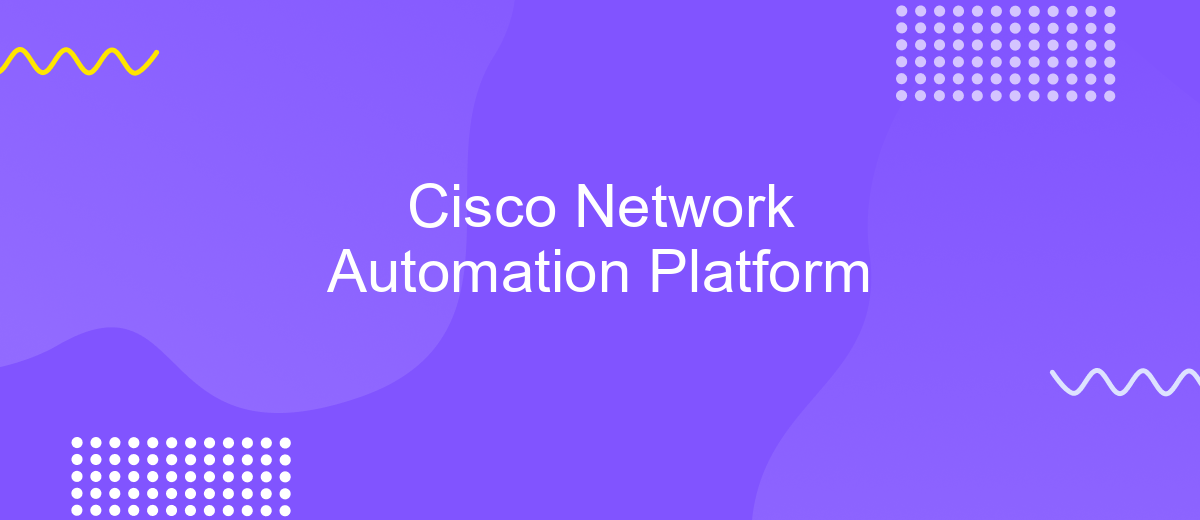Cisco Network Automation Platform
The Cisco Network Automation Platform is revolutionizing the way businesses manage and optimize their network infrastructures. By leveraging advanced automation technologies, this platform simplifies complex network operations, enhances efficiency, and reduces human error. It empowers organizations to swiftly adapt to evolving demands and ensures seamless connectivity across various environments. Discover how Cisco's innovative solutions are paving the way for smarter, more agile network management in the digital age.
Overview
Cisco Network Automation Platform (CNAP) is a comprehensive solution designed to streamline and enhance network management through automation. It empowers network administrators to efficiently manage complex networks, reduce operational costs, and improve service delivery. By leveraging advanced automation technologies, CNAP enables the rapid deployment of network services, ensuring consistent performance and reliability across diverse environments.
- Automated provisioning and configuration management for network devices.
- Real-time monitoring and analytics to optimize network performance.
- Seamless integration with existing IT and network infrastructure.
- Scalable architecture to accommodate growing network demands.
- Enhanced security and compliance through automated policy enforcement.
CNAP is designed to support a wide range of industries, from telecommunications to enterprise IT, providing tailored solutions to meet specific network requirements. Its user-friendly interface and robust feature set make it an ideal choice for organizations seeking to modernize their network operations. By automating routine tasks and providing actionable insights, CNAP allows IT teams to focus on strategic initiatives, ultimately driving business growth and innovation.
Key Features

Cisco Network Automation Platform offers a comprehensive suite of features designed to streamline and enhance network management. One of its key capabilities is the ability to automate repetitive tasks, significantly reducing the time and effort required for network operations. With its intuitive interface, the platform allows users to easily configure and deploy network policies, ensuring consistent performance and security across all devices. Additionally, it provides real-time monitoring and analytics, enabling network administrators to quickly identify and resolve issues before they impact business operations.
Integration is a crucial aspect of Cisco Network Automation Platform, and it excels in this area by supporting a wide range of third-party applications and services. For instance, using tools like ApiX-Drive, users can seamlessly connect different systems, enhancing data flow and operational efficiency. The platform also offers robust security features, including automated compliance checks and threat detection, to protect against potential vulnerabilities. These features, combined with its scalability, make Cisco Network Automation Platform an ideal solution for businesses looking to optimize their network infrastructure.
Benefits

The Cisco Network Automation Platform (CNAP) offers a transformative approach to managing network operations, enhancing both efficiency and reliability. By leveraging advanced automation capabilities, CNAP simplifies complex network tasks, reduces human error, and accelerates service delivery. This platform empowers network administrators to focus on strategic initiatives rather than routine maintenance, thereby driving innovation and optimizing resource utilization.
- Efficiency: CNAP automates repetitive tasks, significantly reducing the time and effort required for network management.
- Scalability: The platform supports seamless scaling of network operations, accommodating growing business demands without compromising performance.
- Reliability: Automated processes minimize human errors, ensuring consistent and reliable network performance.
- Cost-Effectiveness: By streamlining operations and reducing manual interventions, CNAP lowers operational costs and maximizes return on investment.
- Enhanced Security: The platform integrates security protocols within its automation processes, safeguarding networks against potential threats.
In conclusion, the Cisco Network Automation Platform is a vital tool for modern enterprises seeking to enhance their network infrastructure. By automating routine tasks and providing robust scalability, CNAP not only improves operational efficiency but also ensures a secure and reliable network environment. This enables businesses to stay competitive in an increasingly digital landscape, fostering growth and innovation.
Use Cases

Cisco Network Automation Platform is a transformative solution designed to streamline and optimize network operations. By leveraging automation, organizations can significantly reduce manual intervention, resulting in increased efficiency and reduced operational costs. This platform is particularly beneficial for enterprises seeking to enhance their network reliability and agility.
One of the primary use cases of Cisco Network Automation Platform is in facilitating network provisioning. By automating the configuration of network devices, businesses can accelerate deployment times and minimize errors. Additionally, the platform plays a crucial role in managing network compliance, ensuring that all devices adhere to predefined policies and standards.
- Automated network provisioning for rapid deployment
- Enhanced network compliance and policy management
- Efficient fault detection and resolution
- Scalable network performance monitoring
Furthermore, Cisco Network Automation Platform supports efficient fault detection and resolution, enabling IT teams to quickly identify and address issues before they impact operations. Its scalable network performance monitoring capabilities ensure that businesses can maintain optimal network health, even as they grow and evolve. By implementing this platform, organizations can achieve a more resilient and responsive network infrastructure.
- Automate the work of an online store or landing
- Empower through integration
- Don't spend money on programmers and integrators
- Save time by automating routine tasks
Conclusion
In conclusion, the Cisco Network Automation Platform represents a transformative approach to managing and optimizing network operations. By leveraging advanced automation capabilities, organizations can enhance efficiency, reduce manual tasks, and minimize the risk of human error. This platform not only simplifies complex network configurations but also ensures greater reliability and scalability, meeting the demands of modern enterprises. Its ability to integrate seamlessly with existing infrastructure further underscores its value, offering a comprehensive solution for dynamic network environments.
Moreover, the integration of services like ApiX-Drive can enhance the platform's functionality, enabling smoother connectivity and data flow between diverse applications. ApiX-Drive facilitates the setup of integrations without the need for extensive coding, thus streamlining the automation process. As businesses continue to evolve, the Cisco Network Automation Platform, complemented by tools like ApiX-Drive, positions itself as a crucial asset in achieving operational excellence and sustaining competitive advantage in an increasingly digital landscape.
FAQ
What is Cisco Network Automation Platform?
How does Cisco NAP integrate with existing network infrastructure?
What are the key benefits of using Cisco Network Automation Platform?
How can I start implementing automation in my network with Cisco NAP?
Is Cisco NAP suitable for small to medium-sized businesses?
Apix-Drive is a universal tool that will quickly streamline any workflow, freeing you from routine and possible financial losses. Try ApiX-Drive in action and see how useful it is for you personally. In the meantime, when you are setting up connections between systems, think about where you are investing your free time, because now you will have much more of it.


